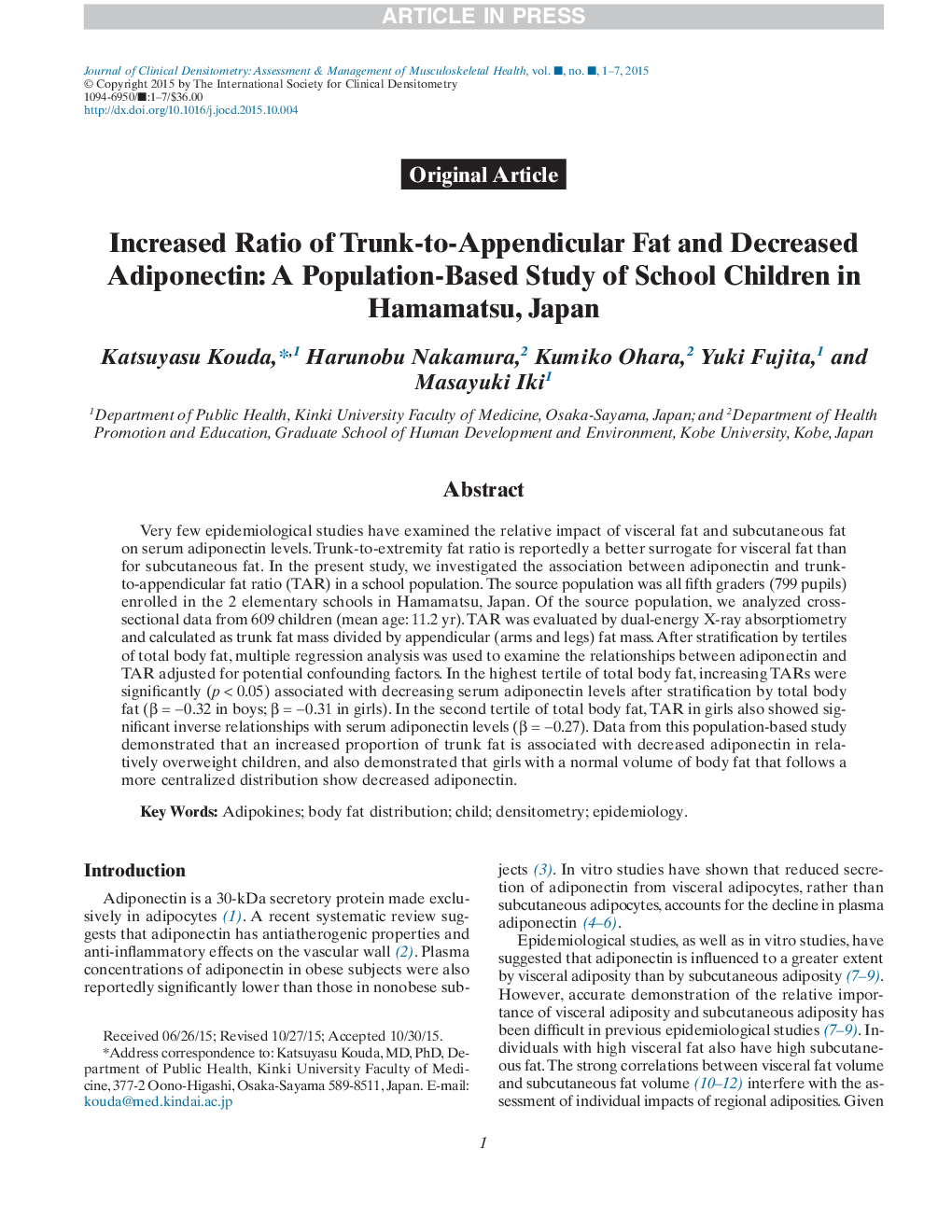| Article ID | Journal | Published Year | Pages | File Type |
|---|---|---|---|---|
| 8723133 | Journal of Clinical Densitometry | 2017 | 7 Pages |
Abstract
Very few epidemiological studies have examined the relative impact of visceral fat and subcutaneous fat on serum adiponectin levels. Trunk-to-extremity fat ratio is reportedly a better surrogate for visceral fat than for subcutaneous fat. In the present study, we investigated the association between adiponectin and trunk-to-appendicular fat ratio (TAR) in a school population. The source population was all fifth graders (799 pupils) enrolled in the 2 elementary schools in Hamamatsu, Japan. Of the source population, we analyzed cross-sectional data from 609 children (mean age: 11.2âyr). TAR was evaluated by dual-energy X-ray absorptiometry and calculated as trunk fat mass divided by appendicular (arms and legs) fat mass. After stratification by tertiles of total body fat, multiple regression analysis was used to examine the relationships between adiponectin and TAR adjusted for potential confounding factors. In the highest tertile of total body fat, increasing TARs were significantly (pâ<â0.05) associated with decreasing serum adiponectin levels after stratification by total body fat (βâ=ââ0.32 in boys; βâ=ââ0.31 in girls). In the second tertile of total body fat, TAR in girls also showed significant inverse relationships with serum adiponectin levels (βâ=ââ0.27). Data from this population-based study demonstrated that an increased proportion of trunk fat is associated with decreased adiponectin in relatively overweight children, and also demonstrated that girls with a normal volume of body fat that follows a more centralized distribution show decreased adiponectin.
Related Topics
Health Sciences
Medicine and Dentistry
Endocrinology, Diabetes and Metabolism
Authors
Katsuyasu Kouda, Harunobu Nakamura, Kumiko Ohara, Yuki Fujita, Masayuki Iki,
